How To Prune Orchids The Right Way: Reinvigorate Key Orchid Species For Better Blooms And Happier Plants
While it’s important to prune regularly to keep plants looking and feeling their best, it’s not always clear how to prune orchids. Here’s our guide to making those essential cuts

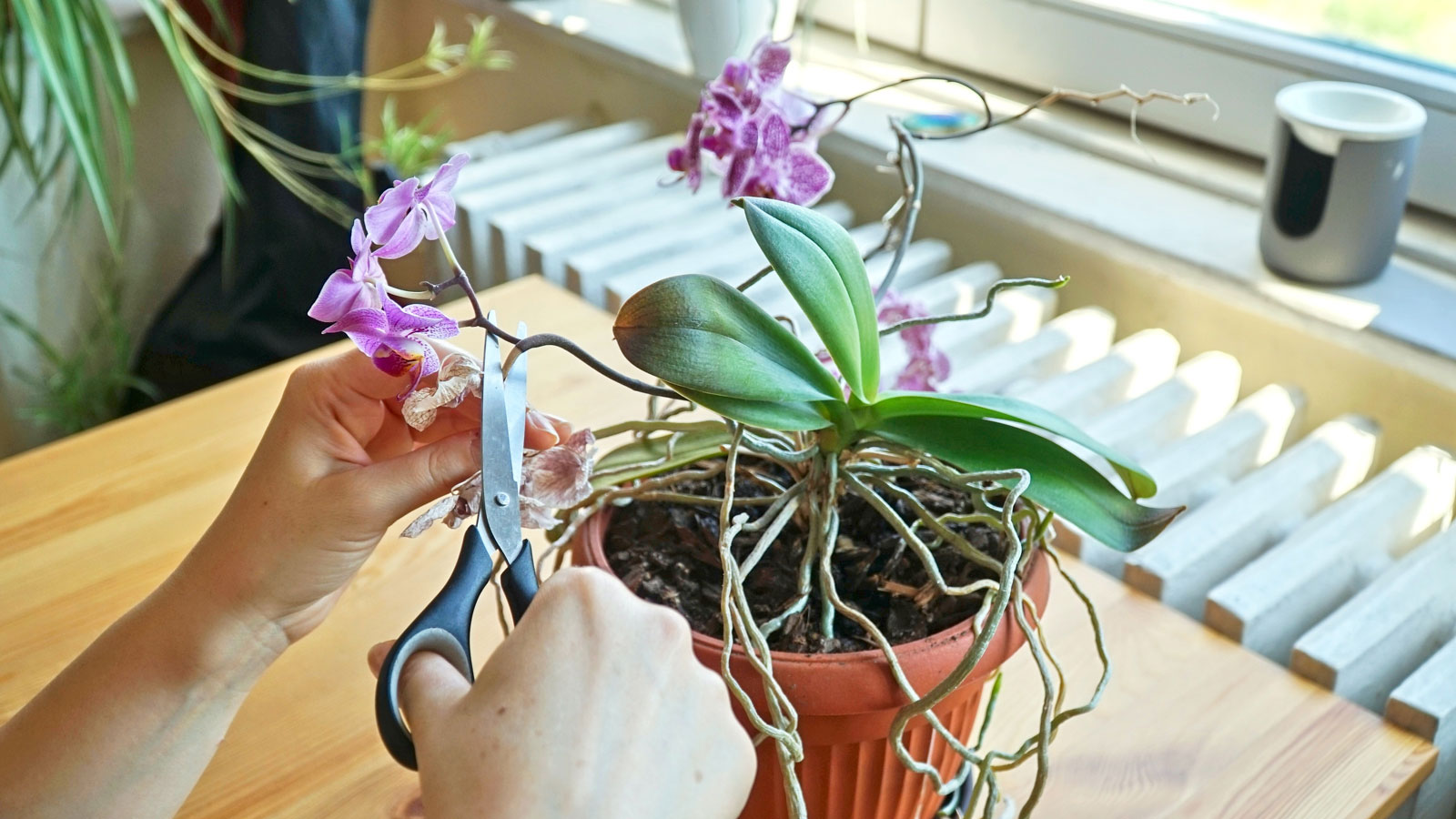
Even the most devout orchidist can use some tips on how to prune orchids. That said, the process of making cuts could be called tidying rather than pruning. The plant will need the spent flower stem removed, and it could require dead plant material pruned away. In some cases, the aerial roots may need to be trimmed.
Part of good orchid care is knowing how to trim an orchid, how much to cut, and when. Orchids don’t need their stems trimmed back like a bush. Instead, they require moderate trimming. When we talk about how to cut back an orchid, it really depends on the variety. Some develop massive, hanging root systems that require attention. Other species need very little trimming save the removal of the old flower and its stalk.
Here’s how to prune an orchid after flowering, how to keep the stem and roots in good health, and important plant aftercare to keep your orchids happy.
When to Prune Orchids
In addition to removing the spent bloom, orchids may need pruning at certain other times. Some species, like Vanda, can get leggy when they are mature and need some rejuvenation pruning to remove old stems. Others, such as Phaleonopsis, usually just need the flower removed. So generally, the question of when will depend on the orchid’s bloom cycle, breed, and overall fitness. Depending on breed, orchids benefit from pruning when they enter their dormant period, which is usually in fall.
When you repot orchids, they also often require some root pruning, and perhaps also removal of dead or damaged leaves. An understanding of common orchid problems such as yellow or wrinkled leaves can help you determine the extent or nature of certain cuts.
There are a couple of different types of orchids: monopodial and sympodial. Monopodial orchids grow vertically with a single stem that produces new leaves and flower stalks. Sympodial orchids have pseudobulbs and grow horizontally. You need to prune the monopodial orchids to stimulate growth, encourage growth, and clean the plant up. Sympodial plants need trimming for the same reasons, and to occasionally remove some roots.
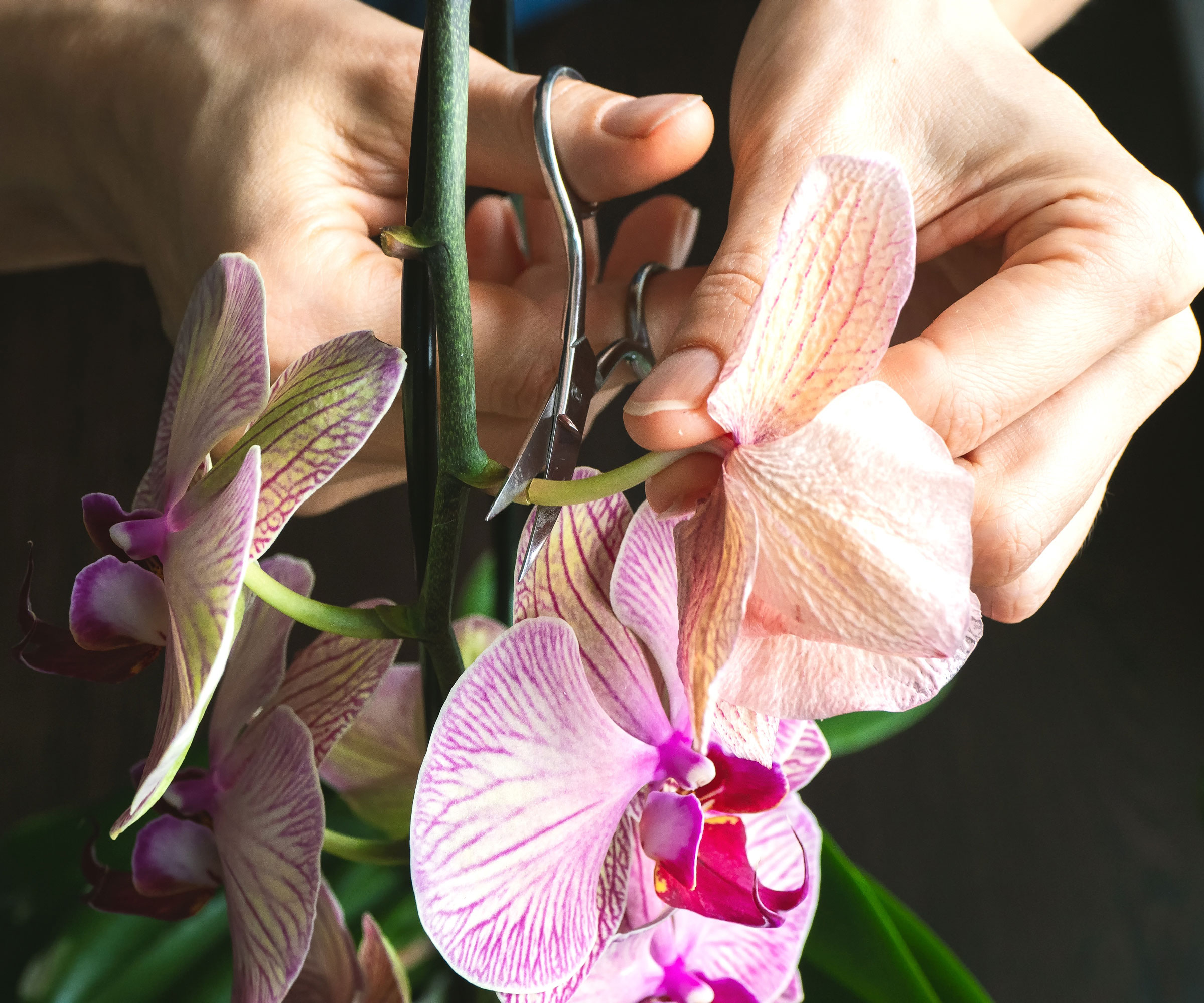
Pruning Different Types of Orchids
There are around 880 recognized genera of orchids. The most available types of orchids are Dendrobium, Phaleonopsis, Vanda, Oncidium, Cattleya, and Cymbidium. Here’s how to tackle pruning for each of these main orchid types:
Sign up for the Gardening Know How newsletter today and receive a free copy of our e-book "How to Grow Delicious Tomatoes".
- Dendrobium: Dendrobium orchids produce long, thick pseudobulbs that persist year after year and should not be cut. These are storage organs for the plant and where the flower spike will occur. When the flowers fade, remove these carefully but leave the stem. Often the plant will rebloom off that same stem. If several years go by, or the stem begins to die back, you should use clean, sharp pruners and cut it back to just above the pseudobulb.
- Phalaenopsis: The phalaenopsis orchid (or moth orchid) is one of the most recognizable of the orchid varieties available. In these, the spent flower stem is removed. Cut it back to just above the second node or joint on the stem. Often a new flower shoot will develop in that location. If the stem dies back, it is safe to assume it will not reflower and you may cut it back at the base. You can remove dead leaves at any time. If any places on the stalk have turned yellow or brown, cut them back completely so the plant will grow back healthier.
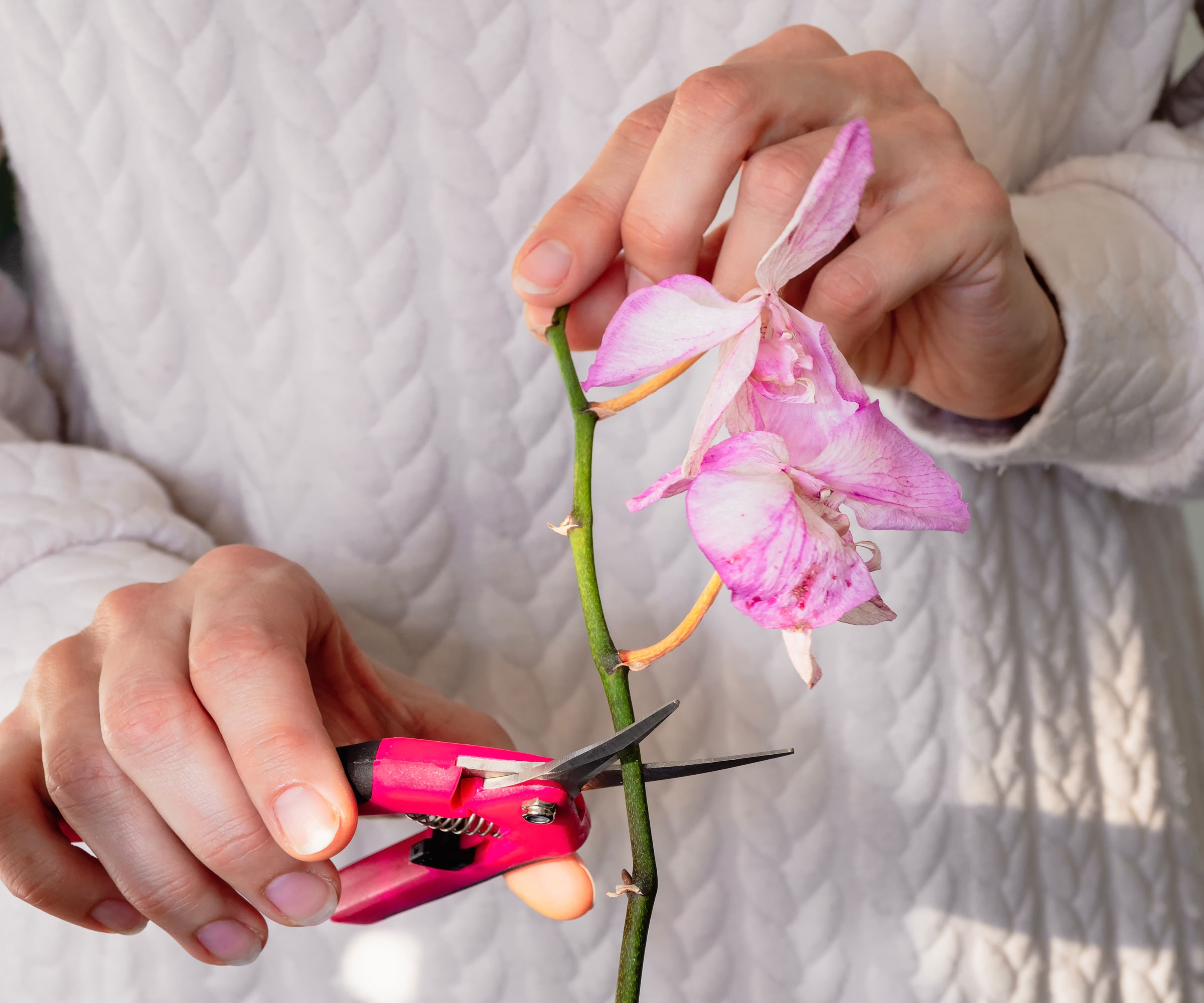
- Vanda: Take the old flower stem off at the base. Remove dead and dying leaves as they occur. Because this plant will produce many roots that hang outside the container, it is often necessary to trim them. These can get quite unsightly and may be pruned to reduce the size of the mass. Prune out any roots that are discolored, mushy, or damaged.
- Oncidium: You don’t prune orchid roots on these plants. All they need in the way of trimming is the removal of the dead flower spike back to the base. Since they flower fall through winter, the flower stem should be cut back in early spring.
- Cattleya: Cattleya orchid flower stalks emerge from a bud sheath. This is a thickened stem with a leaf coming out of one side of the top, and a flower spike out of the other side. Cut the flower spike back to this v-shaped site. Before you make the cut, gently squeeze the sheath to make sure there aren’t more buds inside. Alternatively, wait until the sheath turns yellow and then remove it.
- Cymbidium: Cymbidium orchids need no specialized pruning. They won’t rebloom off any part of the flower stem, so this entire material should be cut back to the base.
What You Need to Prune Orchids
Orchids are grown in very carefully curated and sterile conditions. It is important to minimize the transfer of disease and avoid making ragged cuts that can allow the entry of pathogens. Make sure you have super-sharp shears or scissors to use on your orchid. The sharper the shears, the cleaner the cut will be. A clean cut makes for a healthier orchid.
You can use a razor blade, scissors, or pruners. For agility, the Kings County Tools Ratcheting Hand Pruner available at Amazon offers precision cuts. MIracle-Gro Utility Shears from Amazon are also a great choice, as they have a good grip and are comfortable for extended work and slightly thicker cuts.
There are specialized orchid snips for routine care. Foxglove Garden Snips, also available from Amazon, are comfortable and extremely lightweight and makes low-level snipping a doddle. Sterilize your blades with a bleach solution or alcohol before and after use. Also make sure your hands are clean, or use disposable gloves.
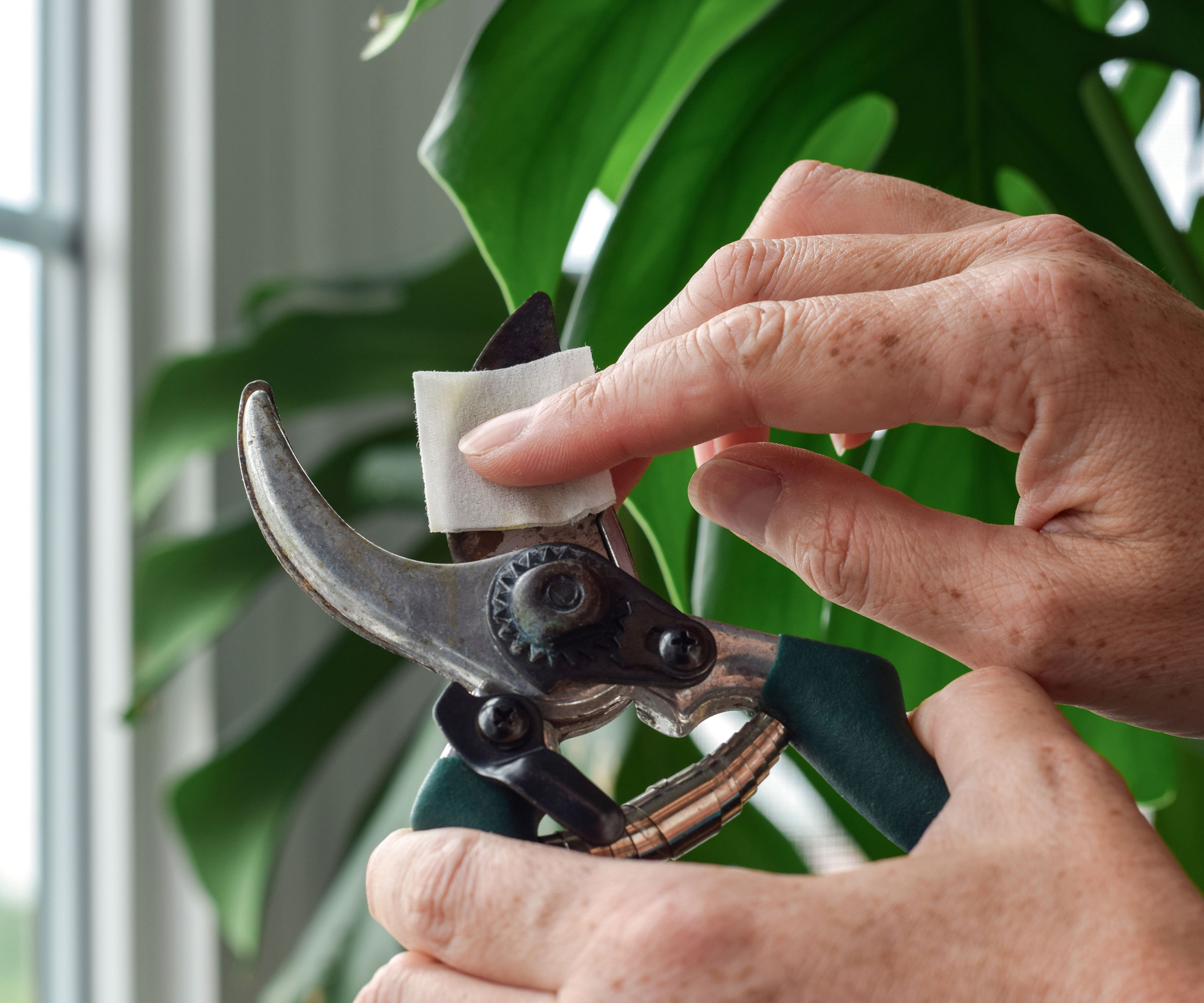
How to Prune Orchids
The most important part to know about how to prune an orchid stem is to find the joint or node. Some varieties have a smooth stem and no node. Other genera will have a visible joint. This is where you cut above when removing a dead flower spike.
A note on how to prune orchid roots. These should be done at repotting time. What you are looking for are dead, damaged, or diseased roots. Do not prune the aerial roots unless they are damaged as these are important for the plant to gather moisture from the air.
Pruning Aftercare for Orchids
It is common for an orchid to lose a leaf every couple of years. These should be removed as they occur. Peel off the dead tissue on the petiole. It’s also best to repot the orchid every two years to freshen the soil and move it to larger housing if necessary. This is a good time to add further plant support if necessary. You can buy sturdy bamboo plant supports for orchids at Walmart in packs of 20-25.
When repotting, investigate the roots for any damage or disease, and clean out anything that doesn’t look healthy. Spray any areas that you have cut with a dilution of hydrogen peroxide and allow it to air dry before you repot the plant. Some growers use fungicide or cinnamon as an alternative.
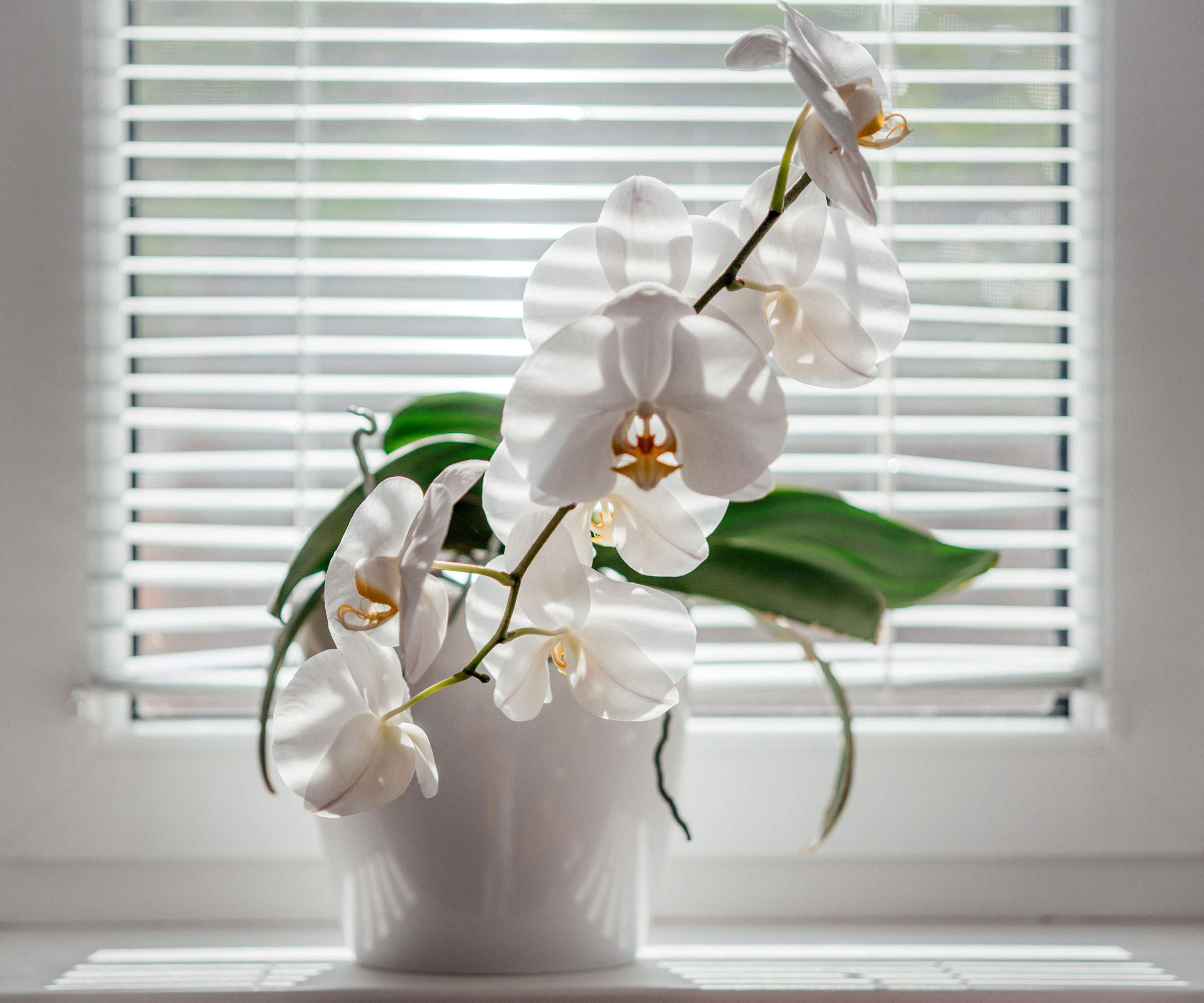
After you have pruned the flower spike, it doesn’t require any different care. When you have pruned the roots, water the plant well after you settle it into a new potting medium. Then let the medium dry out a bit before giving the plant more water. Once you see new growth, resume your orchid fertilizing schedule. Provide the plant bright, indirect light in a warm area of the home as it recovers.
Keep watering your orchid carefully. Don't allow excess water to sit at the base of the plant. Water that is not allowed to drain away will cause the roots to rot. Watering too frequently will also cause this. In the summer, water orchids once a week. In the winter, once every two weeks is sufficient.

Bonnie Grant is a professional landscaper with a Certification in Urban Gardening. She has been gardening and writing for 15 years. A former professional chef, she has a passion for edible landscaping.
- Susan Patterson
- Amy DraissDigital Community Manager